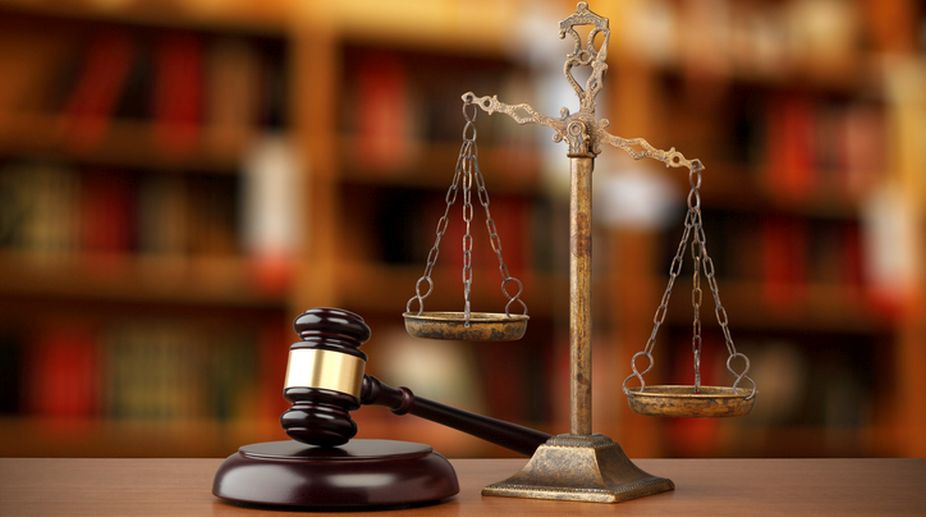The statistics with respect to India’s justice system tell a very sad tale. There are more than 3 crore cases pending before Indian Courts. It can take a litigant anywhere between 10-15 years to get his case adjudicated by a Court, with a further 10-15 years in appeal before the higher courts. For all practical purposes, justice exists in India only in name.
One can safely conclude that the third pillar of India’s democracy, the judiciary, is for all practical purposes dysfunctional and this is taking a phenomenal toll on India’s economy. There is contempt for the law, contracts can’t be enforced, it is perpetrating a culture of dishonesty, leading to a decay in moral values, etc.
The debate within the different arms of the Government of the need to implement judicial reforms has been going on for long. India needs more Courts, more Judges, greater transparency, improved procedures, e-courts, simpler laws, alternative dispute resolution mechanisms, etc. However, ushering in reforms is no simple task. The different stakeholders have to be brought on board, checks and balances have to be maintained, infrastructure has to be created, and thousands of crores of rupees of investments are required.
During the time required to implement badly needed judicial reforms, there are a few procedural steps that India can implement in the short term which have the potential of transforming India’s justice system, work as force multipliers in clearing the backlog, improve India’s record in contract enforcement, give a boost to GDP, and ensure that the rule of law prevails.
Crackdown on Perjury
Perjury is rampant in India. People make false claims, put up false defenses, lie under oath, fabricate evidence, etc. In many cases, litigants are assisted by their advocates in committing perjury.
The Indian procedure codes provide for strict punishment for perjury. But Indian Courts do not hold litigants accountable for perjury. Furthermore, the stage to hold a litigant accountable for perjury arises after the trial is over, by which time 10-15 years have gone by. The reward for committing perjury is high and the cost is virtually nil.
An analysis of court statistics from the United States shows that less than five per cent of the cases filed in the United States proceed to trial, i.e. they are settled or resolved before the trial commences. In states such as Florida, the incidence of cases that proceed to trial is as low as 0.2 per cent.
An overwhelming majority of cases in the US are settled or resolved before the trial commences because Courts come down very heavily on litigants who indulge in perjury, and penalise lawyers who suborn perjury or encourage their clients to indulge in unethical acts.
The system in the US is fairly simple. If a litigant puts forward a false claim or false defense, and the opposite party has documentary evidence showing that the same is false, the Advocate will raise the issue with the opposing Advocate and request the opposing Advocate to get his client to amend the plaint. If the party who has been warned fails to rectify the wrongdoing, the opposing Advocate can move an application for perjury, and the Court comes down very hard on the party who has lied. If the court finds that the advocate has suborned perjury, i.e. knew that his client was lying, the advocate is also punished.
The implementation of a similar system in India would deliver similar results, i.e. more 95 per cent of the cases will disappear, as they will be settled or resolved before going to trial. The system has to be simple, i.e. one counsel writes to the other pointing out the documentation which shows that the other party’s claim is false. If the other party does not rectify its stand, the party can approach a Judge for permission to move an application for perjury, and in such cases the Judge should come down heavily on the party committing perjury.
The benefits of adopting this procedure is that if there are 3 crore cases pending, 2.85 crore cases should get settled or resolved. It will free up the time of the courts to deal with genuine disputes, establish the rule of law, discourage dishonesty, give a boost to India’s GDP, etc.
Consider the following example. In 2007, a manufacturing company sent a part of its machinery to the original manufacturer in Italy for refurbishing and servicing. It insured the shipment for Rs 1 crore. The carrier damaged the shipment in transit and it cost Rs 27 lacs to repair the damage. The insurance company denied the claim that the insurance policy was issued under restrictive clause ICC(B). The case has been pending before the State Consumer Commission since 2007. The insurance policy does not carry any endorsement that the policy was issued under restrictive clause ICC(B). The insurance company has committed perjury and in the process hurt the economy. Rs 27 lac of the manufacturing company’s working capital has lain blocked in litigation for 10 years.
Under the procedure that is being proposed, this matter would have gotten sorted out within a few days of the insurance company making the false claim. The advocate of the manufacturing company would have written to the advocate of the insurance company pointing out that it needs to rectify its false stand, failing which it would move an application for perjury. The insurance company would have had no option but to rectify its false stand and resolve the matter.
Every claim or defense must be substantiated with citations to the Administrative Record
In the US, a litigant is required to assemble an Administrative Record of the annexures on which he is basing his case, each page has to be numbered, e.g. AR 001 – 025, and each pleading has to be substantiated by a citation to the page # of the Administrative Record on which the claim is based.
For example, a summary of the claim that the manufacturer in the example above who filed an insurance claim would be as follows:
The machines were shipped from New Delhi to Italy vide airway bill # 12345 refurbishing (AR 001). The consignee had quoted an amount of Rs 2 lacs for servicing and refurbishing (AR 002). The machines were damaged in transit and the consignee informed Company A that the boxes were delivered in a damaged condition (AR 003) and he provided photographs showing the boxes being delivered in a damaged condition (AR 004). Company A had taken an insurance policy from XYZ Insurance Company for an amount of Rs 1 Crore (AR 005). Company A informed the insurance company of the damage to the consignment (AR 006) but they refused to get the survey done as they claimed that the insurance policy was issued under restrictive clause ICC(B) (AR 007), whereas the policy does not carry any such endorsement (AR 005). The carrier of the cargo provided a damage certificate stating that the machinery was damaged in transit (AR 008). The consignee fixed the machines and raised a bill of Rs 29 lacs (AR 009), thus the extra cost incurred in fixing the machines was Rs 27 lacs. The machines were reimported into India and customs duty of 10 lacs was paid (AR 010). The duty on Rs 2 lacs of refurbishment would have been Rs 1 lac, and thus the company incurred Rs 9 lacs extra on customs duty on account of the damage to the machinery. We lodged a claim of Rs 36 lacs with the insurance company (AR 011) but the insurance company denied the claim on the grounds that the policy was issued under restrictive clause ICC(B (AR 012)), whereas there is no such endorsement of restrictive clause ICC(B) on the policy (005). We request the Hon’ble Court to award Rs 36 lacs to the Company.
As in the example above, every single pleading should be substantiated by a citation to the page number of the Administrative Record on which the proof can be seen by the Hon’ble Judge. There is no scope for misrepresentation on facts and it is less taxing for the Hon’ble Judge to adjudicate the dispute.
The judgment must be substantiated with citations to the Administrative Record
A summary of the judgement in the above example would be documented as follows:
Company A took an insurance policy from XYZ Insurance Company for an amount of Rs 1 Crore (AR 005). Company’s A’s machinery was damaged in transit (AR 003, 004, 008).Company A informed XYZ Insurance Company of the damage to the consignment and requested it to get the shipment surveyed (AR 006), but XYZ Insurance Company refused claiming that the insurance policy was issued under restrictive clause ICC(B). Company A incurred a total cost of Rs 36 lacs in getting the machines repaired (AR 002, 009, 010). Company A filed a claim of Rs 36 lacs with XYZ Insurance Company (AR 011) but XYZ Insurance Company denied the same claiming that the policy was issued under restrictive clause ICC(B) (AR 012). Whereas, the insurance policy does not carry any such endorsement that it has been issued under restrictive clause ICC(B) (AR 005) and therefore the claim of XYZ Insurance Company is false. A decree of Rs 36 lacs in favour of Company A is passed.
As in the above example, every part of the judgment is referenced to the page number of the Administrative Record and there is very little scope for error, thus there is very little scope for an appeal. There is also very little scope for foul play.
Costs should be awarded to the party that prevails
It should be mandatory for Courts to award costs to the party that prevails in the suit. A party that has to litigate to enforce a contract should be compensated for its costs. This provision will improve access to justice for the small party, as they often can’t afford to litigate. Advocates will be motivated to accept briefs from small parties who have a good case knowing that they will be able to recover their fees when they win the case.
The imposition of costs will act as a deterrent for litigants who have a false claim or a false defense to settle the matter. In order to encourage litigants to settle their disputes through an alternative dispute resolution mechanism, costs may be awarded in favour of the party that proposed a settlement, but the settlement was rejected and the final award was less than 25 per cent of the settlement offer.
The benefits of incorporating these procedures would be phenomenal. In light of the data available from the US justice system, the adoption of similar principles should deliver similar results. The potential that more than 95 per cent of the cases that are pending before the Hon’ble Courts can be settled, withdrawn, or resolved is too huge to pass up. This would reduce the pressure on the justice delivery system and enable it to focus on the reforms that it needs to implement. It would give a big boost to India’s economy, it would add a couple of percentage points to India’s GDP, establish the rule of law, deter wrongdoers, and enable the common man to access justice.
The writer is a distinguished scientist and can be reached at jpglobalconsultinggroup@gmail.com











